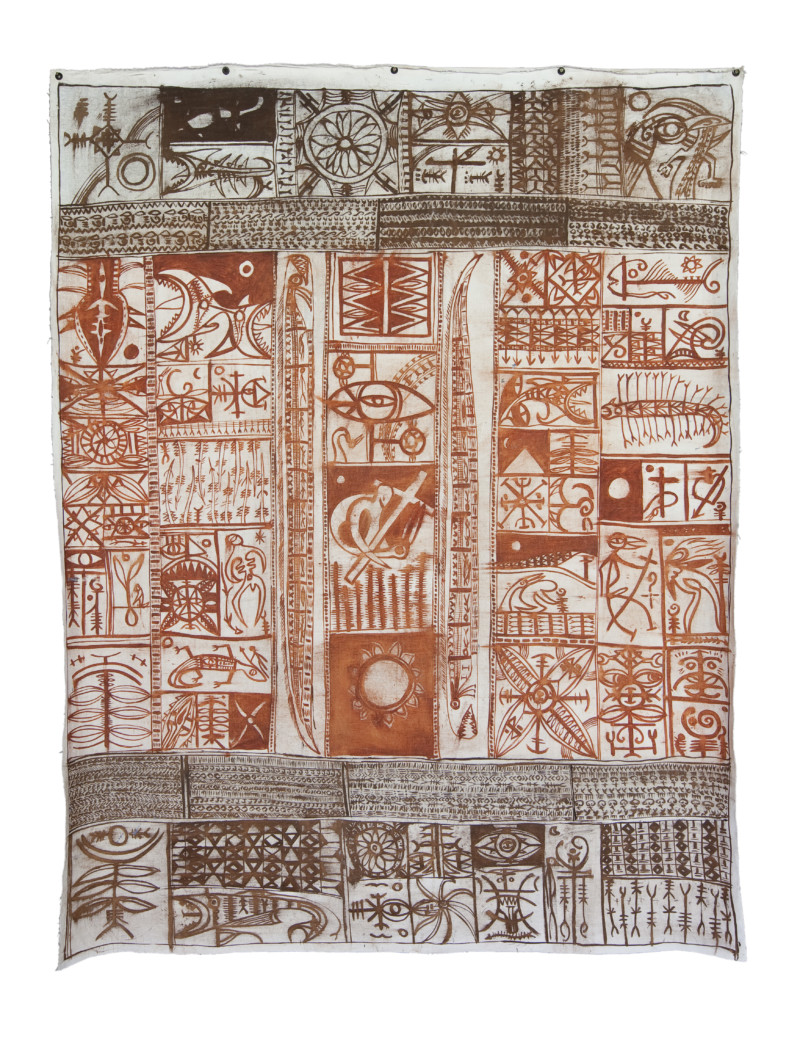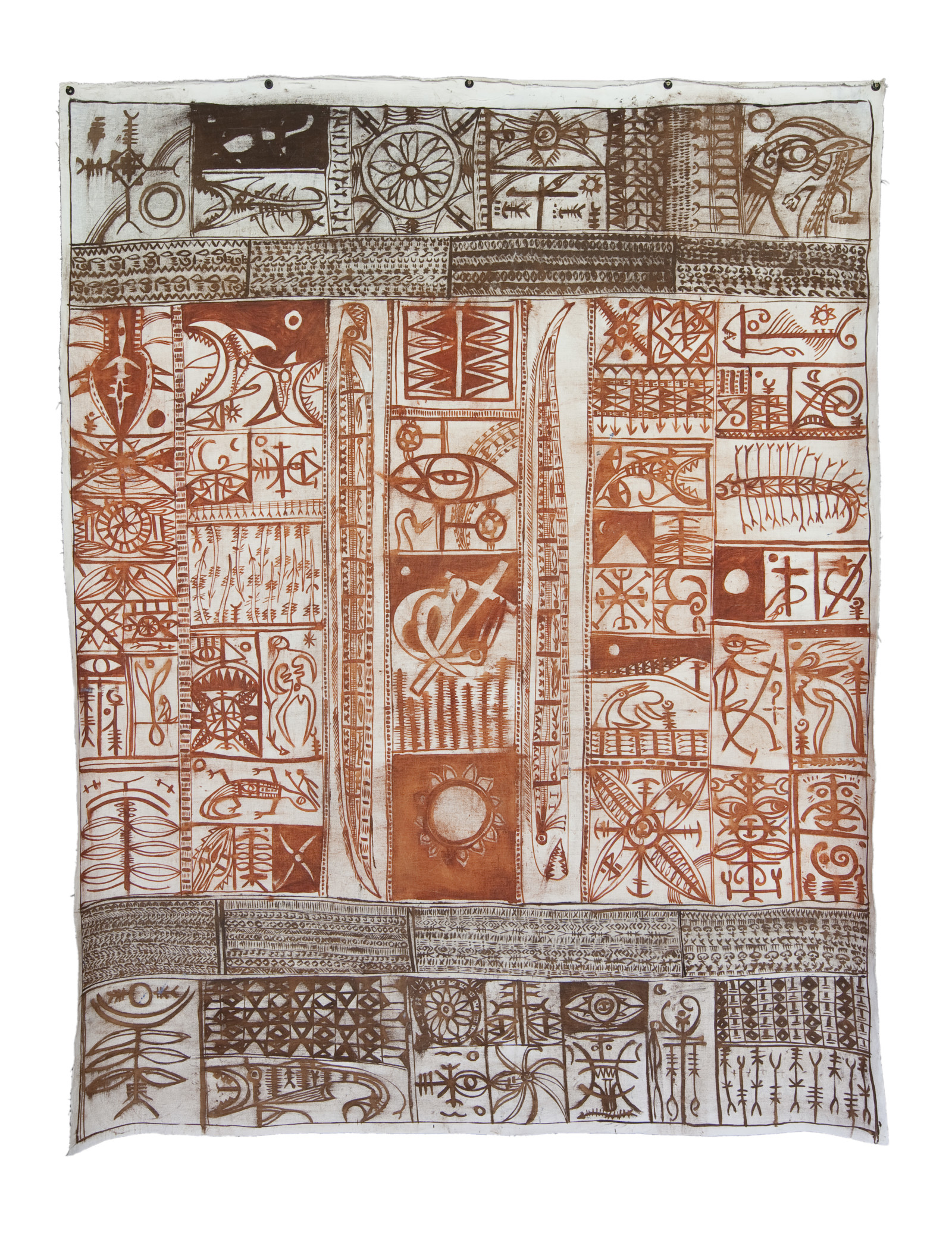PULE, John Puhiatau;
Vaikona
1993
Oil on unstretched canvas
1800 x 1900mm

In Vaikona (‘bitter water’) and other paintings of the 1990s, John Pule draws on the tradition of hiapo, Niuean tapa. Although there are stylistic affinities with tapa from other islands of the Moana (Pacific) region, hippo makers do not use block rubbing or other devices for the mass replication of motifs. Each piece is executed freehand. Designs are dynamic rather than repetitive. Pule works the same way but on canvas. His painting is neither representational nor abstract. He seeks to convey the collective energy that binds the painter and his work to his people.
Pule was born in Liku, Niue, but moved to Tāmaki Makaurau with his family when he was an infant. His work reflects the conflicts and dislocations that often characterise the migrant experience. He uses motifs associated with Christianity, Niuean, and Moana traditions. The most conspicuous elements are bird-like creatures, which catch other creatures or hover menacingly over humans, who are sometimes represented as cradling the sick or making love. The figures do not represent gods, mythological figures, or specific people.
The artist’s intention is to convey a universal vision of desire and danger in human life. This vision reflects the forces of colonisation—particularly the missionary colonisation of Moana beliefs and dreams, and the sense of loss caused by movement away from island homelands. Pule’s works fuse biography, cartography, cosmology, and the body. Some refer to Niuean geography, marking out the names of certain villages. Some show the flow of blood through the body. Some represent a migrant’s ‘Stations of the Cross’.
Provenance
1995–
Fletcher Trust Collection, purchased May 1995

